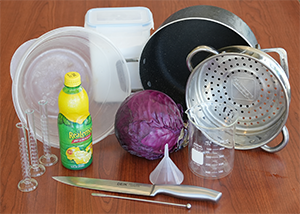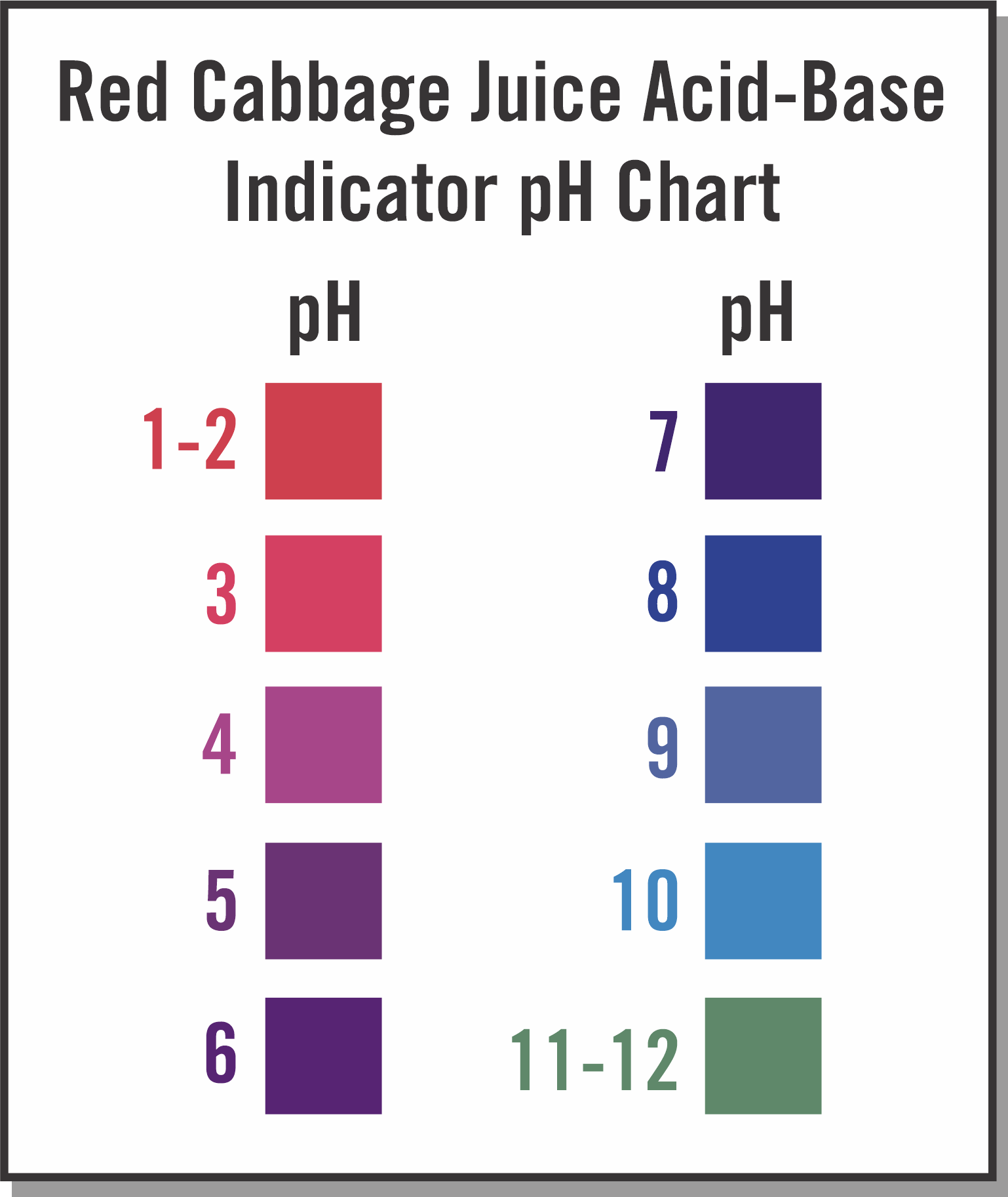Red Cabbage pH Indicator
 Red cabbage is a healthy, nutrient-rich vegetable that is loaded with vitamin C, vitamin K, and dietary fiber. But did you know that the pigment that gives it its rich color can also be used to measure the pH of many household substances? This experiment will show you how to turn red cabbage into a pH indicator and how you can use it to test the pH levels of liquids found right in your home.
Red cabbage is a healthy, nutrient-rich vegetable that is loaded with vitamin C, vitamin K, and dietary fiber. But did you know that the pigment that gives it its rich color can also be used to measure the pH of many household substances? This experiment will show you how to turn red cabbage into a pH indicator and how you can use it to test the pH levels of liquids found right in your home.
Fun Facts/Information:
- pH is a scale we use to measure the acidity or basicity of an aqueous solution (containing water).
- pH is measured using a scale that ranges from O - 14.
Any substance measuring less than 7 is acidic.
- Any substance measuring more than 7 is basic.
- Any substance measuring exactly 7 is neutral (water).
- A substance that can dissolve in water and increase its basicity is referred to as alkaline (baking soda is an example).
- Some acids and bases are very strong and could be harmful if not handled properly.
- Anthocyanin is a pigment found in many foods (purplish in color). If extracted, anthocyanin can be used to determine pH levels due to its color changing properties.

Materials:
- Head of Red Cabbage (chopped)
- Saucepan (big enough to boil cabbage)
- Strainer/Colander
- Container for Strained Liquid (bowl/pan/jar)
- Ladle
- Clear Glass Cup (for each test)
- Stirring Spoon
Test substances (suggested)
- Dish soap
- Baking soda
- Baking powder
- Sugar
- Lemon Juice
- Vinegar
- Toothpaste
Procedure (With Adult Supervision):
- Chop a head of red cabbage into small pieces.
- Place the pieces into a pot with water and bring to a boil. Reduce heat and let simmer for about 20 minutes or until you notice that the water has turned a dark shade of purple. This is the anthocyanin being extracted from the cabbage.
- Remove from heat (let cool if moving to a container that can't hold hot liquid). Strain the liquid into another container so that all solid material is removed. Your pH testing solution is now ready!
- Use a ladle to portion the solution into clear glasses for however many tests you would like to conduct (the list of suggested substances is in the materials section at the beginning of this activity).
- Use a stirring spoon to completely mix substances with portioned out pH testing solution.
- Use the color key below to determine where the substances you test falls on the pH spectrum!

Quick Links
Where are Activities Available?
We partner with over 600 educational organizations.
See our school locator